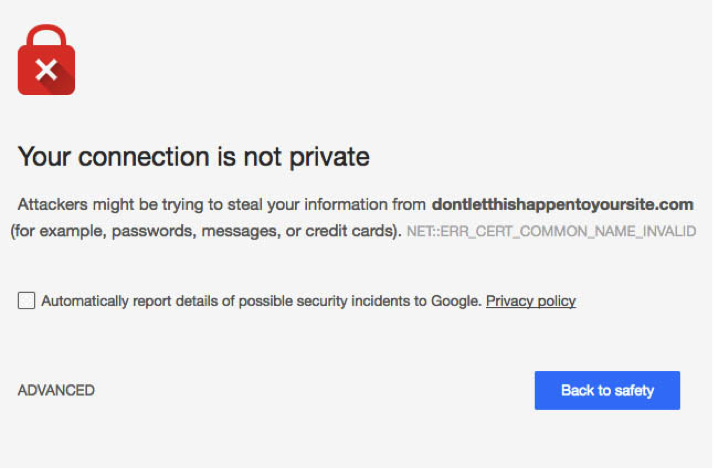ProBlogger: Should You Move Your Blogging Site To HTTPS? | |
| Should You Move Your Blogging Site To HTTPS? Posted: 21 Nov 2016 12:18 PM PST By ProBlogger SEO expert Jim Stewart ofBloggersSEO. You’ve no doubt seen the subject of HTTPS in the media recently – the importance of applying it to your blogging website in order to preserve your Google rankings has been widely reported. But what does it mean for you? Do you have to drop everything and start the process of moving over right away, or will it pay to wait a few months? For some smaller blog owners it won’t make a lot of difference in the short term, but if you’re involved in eCommerce or the exchange of information, the HTTPS conversation is one you’re very much going to want to be involved in. What’s All the Fuss About?Hypertext Transfer Protocol Secure, or HTTPS for short, is an extra layer of protection between a website and a reader, creating an encryption in the data that’s transferred between the two. Without it, all the information sent to a site — login details, information on forms and even passwords — can be stolen at some point between the user and the server. HTTPS encrypts the information, so only the reader and web server knows what’s in the information. If someone does hack into the site, the only information they will receive is that you went to the site, not anything that was shared while you were there. Google’s Push for HTTPSIn 2014, Google announced that it would include HTTPS as a ranking signal, identifying it as one of the ways for bloggers to increase their rankings. Google’s move to increase the security of the Internet has so far been voluntary, but the benefits are obvious. Not only will you have a more secure site, giving your readers a greater sense of security, you’ll also get a boost in rankings and a net increase in organic traffic. This past September, Google announced they were going to make another change to Chrome in the near future. Starting in January 2017, Chrome users will see a warning if they land on a site without HTTPS — if that site accepts credit card details and login information — and will get a warning stating that the site may no longer be secure. Bloggers without credit card transactions or login details may think they’re safe from harm to their traffic, but it’s only a temporary feeling of security. Google has announced that this is only the first of many changes they’ll be making, with a gradual push toward complete security on the Internet. In the future, all sites will be subject to these not secure warnings for users on Google Chrome. How Does This Affect Your Blog?The added benefits of better security and higher Google rankings are nothing to ignore, just as the possibility of your readers coming upon a big red warning label on your site is something you’ll want to avoid at all costs. However, switching to HTTPS isn’t as simple as buying a certificate for your site. You’ll likely end up with duplicate pages, causing duplicate content errors among other problems to your site. Instead of just leaving your site the way it is, you need to redirect the old pages to the HTTPS version, and then remove all the links to the old HTTP site. You’ll need to check for links in obscure spots such as:
After all your links have been updated, the next step is to update all the existing redirects in place to make sure they’re all pointing to the new HTTPS site address. If you’ve done any configuration in the HTTP Search Console profile, you’ll need to mirror the information for the HTTPS Search Console profile. Once you’ve finished with this you’ll need to do a full crawl of the blog to make sure there are no redirect changes. Also, look to make sure there are no HTTP references left. When all this is done, it’s a good idea to monitor your traffic for a few weeks to make sure there are no issues. Pro TipsBack-up any file that you edit. Moving to HTTPS may require some code editing, and you’ll need the original files as reference in case any of the new changes breaks anything. Be extra careful when working with .htaccess. This is the base file responsible for the switch to HTTPS, and one mistake in the code can stop your site from loading. Update your Google Maps listing, social media accounts, and business listings. Old backlinks won’t cause you any trouble, but new ones will speed up the new search results. Jim Stewart, CEO of BloggersSEO, is a recognised digital marketing expert. Jim is ProBlogger's SEO expert and will share his vast SEO knowledge to equip you with the systems and skills to optimise and monetise your blog using tried and tested techniques. What Jim doesn't know about SEO and blogging isn't worth knowing The post Should You Move Your Blogging Site To HTTPS? appeared first on ProBlogger. |
| You are subscribed to email updates from ProBlogger. To stop receiving these emails, you may unsubscribe now. | Email delivery powered by Google |
| Google Inc., 1600 Amphitheatre Parkway, Mountain View, CA 94043, United States | |





0 comments:
Post a Comment